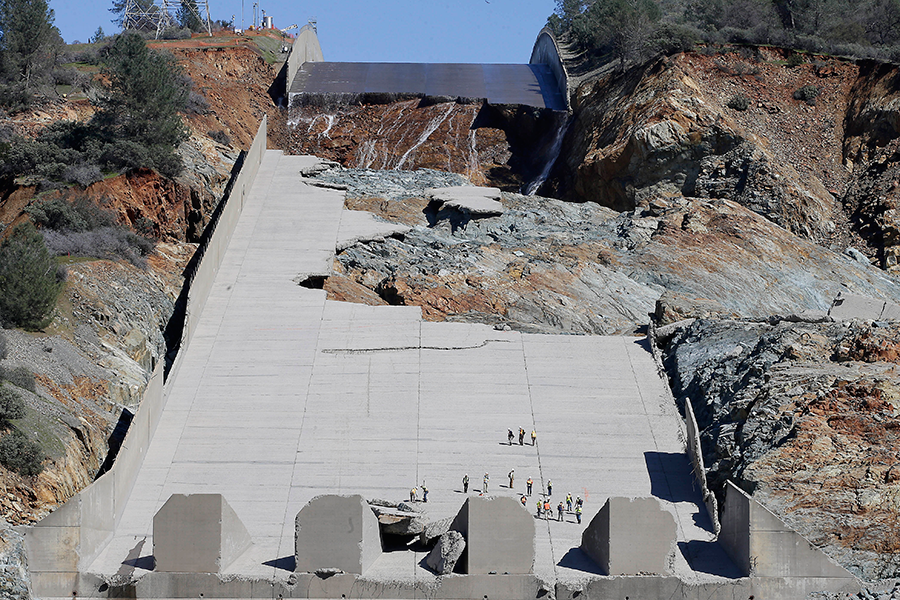Evacuation orders lifted, but Oroville dam saga may have just begun
Loading...
The Oroville dam’s main spillway is in bad shape. And for California’s water authorities, the countdown until the next rainy season has already begun.
A report from an independent team of consultants presented to federal officials last week concluded that damages to the spillway, incurred during last month’s exceptionally heavy flows, would need two years to be fully repaired. But California doesn’t have that much time: If the spillway is not operational by Nov. 1, the consultants warned, the area would face “a very significant risk”.
“You have to do some kind of quick fix that you can get through next year in case next year is as bad as this year,” said J. David Rogers, a dam expert from Missouri who reviewed the report, in an interview with the Sacramento Bee. “At the same time, you’ve got to really look at this whole thing and say, ‘How can we build a better spillway chute that’s more resilient?’ ”
That is likely to put a spotlight on the work of repair crews, who are racing to keep up with what the consultants recognized as a “very demanding schedule,” as well as deep structural flaws that, in some cases, trace back to the spillway’s original design.
The spillway itself, the team found, was leaking water from stretches thought to have gone undamaged. Its concrete is only 12 inches thick – worrisomely thin, for the consultants – and was laid over clay used to fill in holes in an uneven hillside beneath.
"This calls into question whether the portions of the slab that appear undamaged by the failure should be replaced," the consultants wrote, in a gesture toward what would be a much longer repair process.
A secondary, emergency spillway that threatened to collapse during the February crisis, triggering evacuation orders for some 188,000 people downstream, was also singled out in the report, with experts calling it “absolutely critical” that the spillway not be used again.
Work crews have gone about patching up damage to that spillway, which had never previously been used, after dam operators closed water flow toward it. And Department of Water Resources acting director Bill Croyle, notes the Bee, has said he would be prepared to utilize the emergency chute again in the spring if necessary.
Authorities have not provided a cost estimate for the dam-spillway repairs. But on Wednesday, the California Legislative Analyst’s Office called for tens of billions of dollars in repairs and updates to dams, levees, wetlands, and other state flood-management projects.
Those costs are part of a mammoth tally of infrastructure projects that the American Society of Civil Engineers (ASCE) says are necessary nationwide, as The Christian Science Monitor’s Patrick Reilly noted on March 10. In its 2017 report card, the ASCE gave the United States a D+ for infrastructure quality. That’s not so different from the D or D+ it dealt out in the previous six report cards, dating back to 1998, but the price tag has risen over the years, from $1.3 trillion in 2001 to $4.59 trillion this year.
The consultants’ report comes as officials in Butte County, Calif., lift the last evacuation warnings urging residents to be ready to evacuate at a moment’s notice, reported the San Jose Mercury-News.
This report contains material from the Associated Press.






